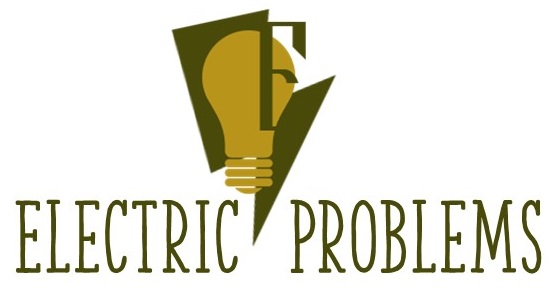How to Tell If RV Converter is Bad? [Troubleshooting]
DISCLAIMER: AS AN AMAZON ASSOCIATE I EARN FROM QUALIFYING PURCHASES. THIS POST CONTAINS AFFILIATE LINKS THAT WILL REWARD ME MONETARILY OR OTHERWISE WHEN YOU USE THEM TO MAKE QUALIFYING PURCHASES. FOR MORE INFORMATION, PLEASE READ MY EARNINGS DISCLAIMER.
|
If your battery is not being charged and/or your DC appliances are not getting enough power (if any at all), that means it’s not receiving a normal amount of DC current that should be supplied by a converter. If your breaker trips and doesn’t let you reset, this is another sign of a bad converter.
When the converter in the RV goes bad, this could cause a lot of problems. Anything from your DC appliance and light malfunctioning, to your battery not being able to charge.
If your appliances or lights refuse to be turned on, then, it could be a problem with a converter and it needs to be resolved. There is nothing worse than not realizing that your battery is not being charged because you are counting on it!
A converter is designed to turn a standard AC (Alternating Current) power into DC (Direct Current) power. Some of your appliances do use 120 VAC shore power, but others need to run off the 12 VDC.
This is a list of some of the appliances that use 12-volt DC electricity in your RV that could be malfunctioning because of the bad converter:
- Lights
- Water pump
- Air conditioning
- Furnace
- TV
- Stove
- Refrigerator
The converter is also responsible for charging your battery, which you will use when power from your campsite is not available. Once on the road, you will use the battery to power your 12-volt appliances and an inverter to power your 120-volt devices.
Signs of the broken converter include:
- Appliances. Your appliances may stop working.
- Lights. Your lights may start dimming.
- Refrigerator. Your refrigerator not being able to keep the correct temperature.
- Battery. The battery is not charging.
Basic things to check for when suspecting a converter problem:
- Appliance fuses
- Converter breaker
- Converter fuses
- Connection terminals
- Wiring
Here are some questions to ask yourself before spending money and changing a converter:
- Is your battery in a good shape?
- Are you trying to run a converter without a battery?
- Did you mess up the battery wiring before getting it right?
We will go over these questions and the converter troubleshooting below.
1. Is your battery in a good shape?
Your battery is an important part of the converter setup since it will take on the load when it will have a problem keeping up with all the power demands that you are placing on it. If you have a battery that is not suitable for taking a load, you actually have a big problem on your hands!
Troubleshooting battery is not complicated and you may want to test the following:
- Battery charger. Commonly solar panels and the converter.
- Battery. The battery itself could be at its last breath…
First, let’s check two systems that could be responsible for charging your batteries:
- Solar panels
- Converter charger
Battery charged by solar panels
If your battery is being charged by solar panels, then you need to check all the connections between your solar panels and a battery to make sure it is being properly charged. If you are still not sure if your solar panel charging system is working properly, here is a good video to help you out:
Battery charged by converter-charger
If your battery is set up to charge through converting 110-120 volt AC (Alternate Current) voltage into 12 volt DC (Direct Current) by your converter and it’s not being charged, then you could have a problem with a converter. This could be anything from bad wiring to lack of AC power (which has nothing to do with the unit itself).
If the converter by itself is not showing any signs of “being alive”, meaning no output, it may require further troubleshooting as shown below. You can also check out an article on RV Converter Troubleshooting.
Both solar and converter setup could have the following problem:
Bad battery!
The battery should be in good condition
If it’s not your charging system (converter or solar), your battery could be actually getting old and require replacement. Whether we like it or not, at some point our battery “has to go” and we need to get a new one.
A lot of people are confused about this one. They think that they don’t even need a battery when they are mainly hanging out at the campsite and using their 120VAC power source.
But the lack of a properly charged battery is the main source of RV electrical problems! The battery needs to be available for people who have many gadgets that they want to use on the road.
Let’s say that you are happily watching TV in your camper while charging several electronic devices at the same time. In the background, there are quite a few things running like a refrigerator, a/c or furnace, lights, etc, and what happens if someone decided to use a microwave?
If this load ends up being more than your converter can keep up with, it will partially go on the battery. If there is no battery available or it is out of juice, then the converter will overheat and get damaged rather quickly!
The battery may not necessarily go bad, just check the connections to it to see if they require cleaning. Corrosion and acid build-up could create extra resistance and block the electricity that your battery needs for charging.
It is usually very simply removed by using a q-tip and dipping it into a “baking soda/water” mixture. You definitely do not want to be stuck with a battery problem on the road, so this is how you test your battery:
If after testing with a multimeter you find out that your battery is in a good condition, but it’s still not charging, then you have a problem with your converter or solar charging system.
** A tip! If you don’t feel like testing your battery or just don’t have a multimeter with you, take it to a local shop and they will test it for you.
** Warning! Before doing any manipulations with batteries, wires, or any electrical devices, make sure that you unplug your electricity! That includes (but not limited to) disconnecting the main power source, flipping electric switches, and disconnecting a battery.
Also, if you used your batteries in a heavy-duty manner (deep discharges, many charge/discharge cycles) and not maintained properly (consistent water refills, undercharging, etc.), then regardless of age, it will go bad quicker.
You can check out this useful article on how long deep-cycle batteries last.
2. Are you trying to run a converter without a battery?
If this is your case, then electric system overload could be a problem! You have a battery in your recreational vehicle for a good reason and it is not just to supply you with power on the road.
You may not realize it, but it also serves you while being parked and plugged in into shore power. Just like in a car, a battery partially takes on a load if you overwhelm your trailer with accessories.
Even if you don’t think you need it because you are plugged in constantly drawing energy from your main power source, it is so easy to turn on many things at the same time and cause a lot of stress on the converter system. If you notice dimming lights (an easy one to spot) and you don’t have a battery installed, then this is probably what is happening to you!
To test this theory, all you have to do is take the battery out of your main vehicle and plug it in with your converter system. If you see an improvement, just get a new battery and you are all set!
If this does not help, let’s go ahead with further troubleshooting.
Did you mess up the battery wiring before getting it right?
This is actually an interesting point because converters have one or two 30-40 amp fuses inside to prevent system damage caused by user negligence. If you managed to get your battery cables connected in reverse, the fuses will “self-destruct” and save a day!
It is called:
Reverse battery protection fuse
It could be either internal or external, like in this picture:
The problem with this is when you change your cables to the right setup, you may not even notice this problem or even be aware of it. Don’t forget that “black is positive” and “white is negative”.
Converter troubleshooting
Not it’s time to check the actual converter! Let’s get all the tools out or find somebody who has them!
Before we get started, it is a good idea to check for incoming power. Use the voltage meter to test the AC entry point of your converter or DC breaker box if the converter is built-in.
You can also test the outlet that the converter is plugged into. If there is voltage coming in, but still no power supply to your DC devices, you should check the wiring and connections for your converter before running into the store and getting a new one.
The following are the reasons to think that your converter is broken:
#1. A tripped circuit breaker does not reset
Your converter breaker trips again as soon as you plug the converter back in or if you keep it in, it does not let you reset. Big chance that you have a problem with your converter and it needs replacement.
This is especially true if you see an electric arch as you plug it in. Opening a converter box is not recommended unless you are a professional at this.
#2. Dangerous or inadequate voltage range
Healthy voltage ranges are around 108-130 volts at the entry point and around 11-13 volts at your 12V breaker box. Output over 13 volts is dangerous for your equipment, and below 11 volts is not sufficient.
As a sign of overvoltage, your devices will keep on blowing fuses. Get a professional opinion on this one and you will probably need to change your converter.
#3. No output voltage
If everything is fine with your incoming power, check the output voltage of your converter with a multimeter. As power exits your converter it should be in a range between 11-13 volts (over 13 v can fry your equipment).
Let’s say that you checked everything and the converter supplies NO power to your appliance and a battery (or is or below 11 volts) while everything is fine with incoming power, then just replace the darn thing and get on the road!
** Important! Replacing a converter yourself is not easy. It is recommended to get professional installation, especially if you never dealt with the electrical wiring.
Feel free to save this infographic for future reference .
Replacing your converter?
This is how you do it:
Here are some popular converter models from Amazon:
When changing a converter, it is usually a good idea to upgrade an inverter as well. Inverter-chargers like these, take less space (one item instead of two) and do not require complex installation methods.
These are sine wave inverter-chargers (quieter, better quality electricity, more expensive):
And this is a modified sine wave version (less expensive, some appliances will make buzzing noise):

Click on the white button above to find your electrician!





